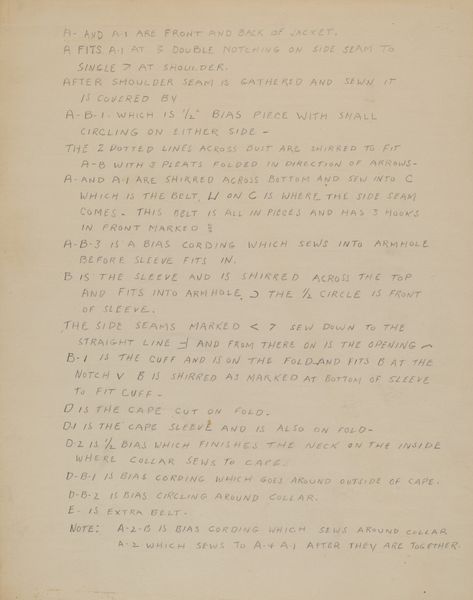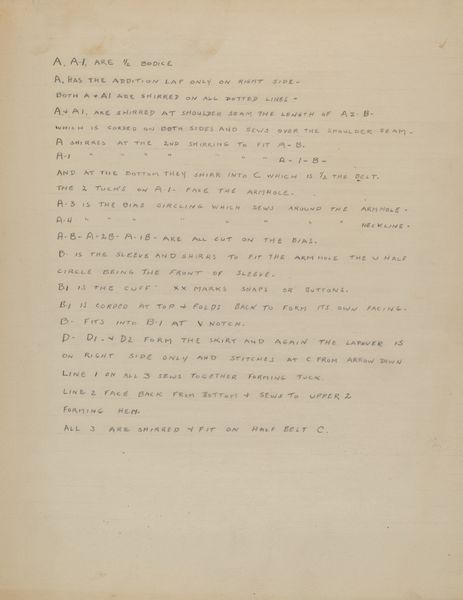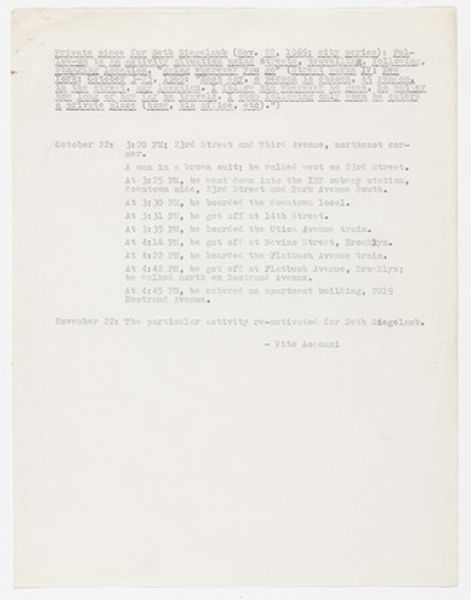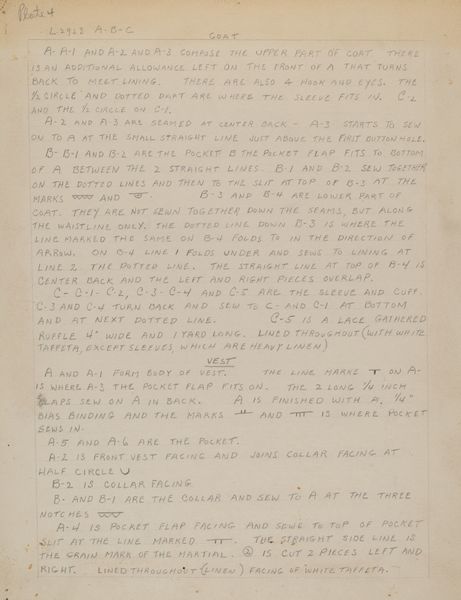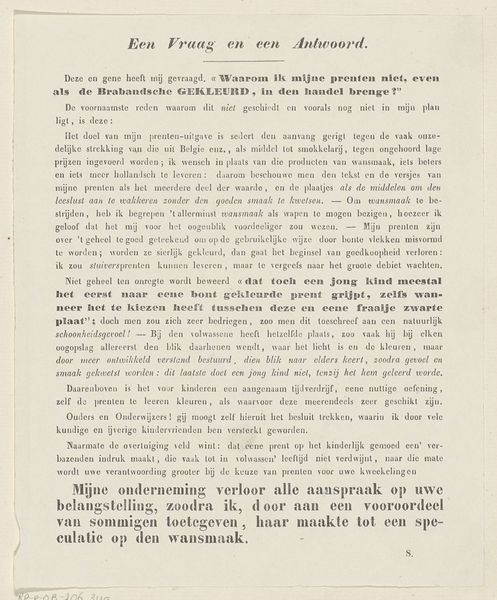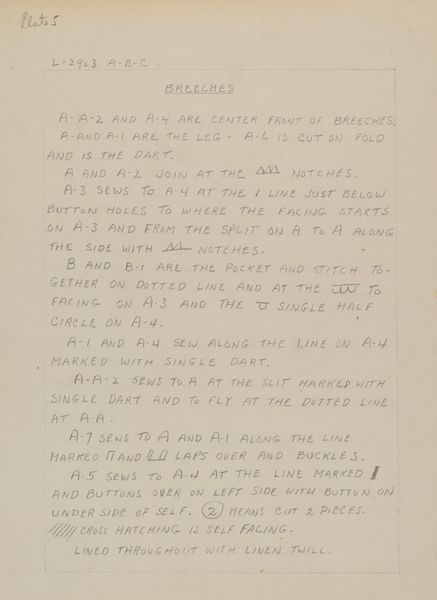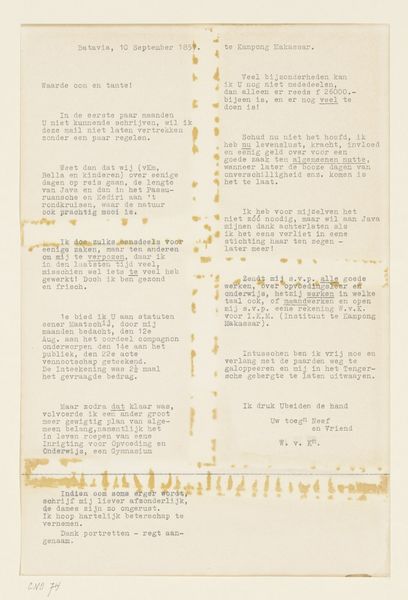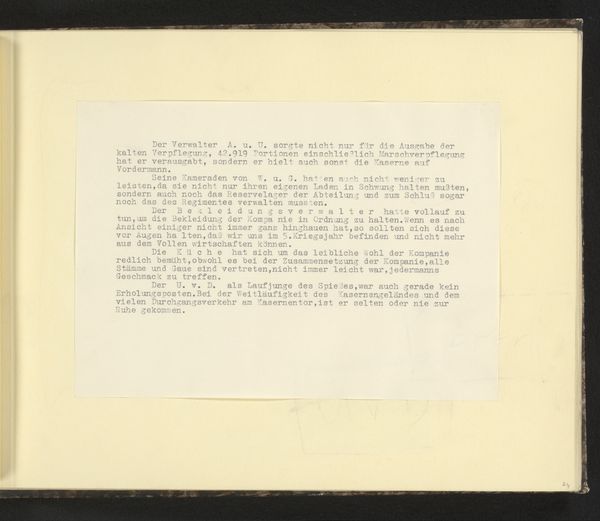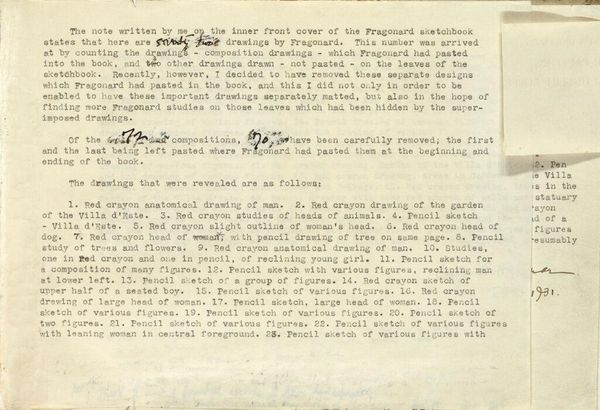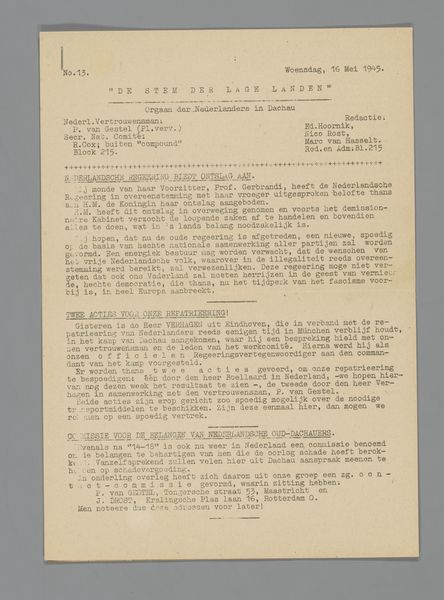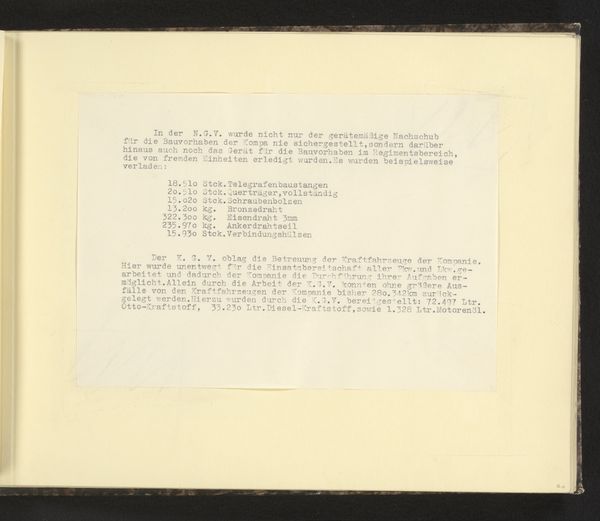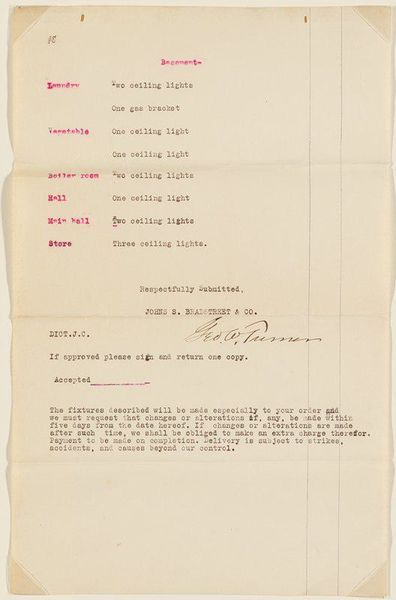
print, paper
# print
#
paper
#
text
Dimensions: height 218 mm, width 142 mm
Copyright: Rijks Museum: Open Domain
Curator: Here we have “Vers op het overlijden van Jan Nieuwenhuyzen,” dating from around 1806-1807. The artist, Maurits Cornelis van Hall, composed this as a print on paper. Editor: It strikes me first and foremost as a somber meditation. The careful arrangement of text, almost a visual poem, certainly evokes a quiet and reverent mood. Curator: Indeed. As an epitaph, or memorial poem, it weaves together themes of remembrance, virtue, and eternal life. The careful wording would have been intended to provide consolation. Notice also how certain words and phrases, when originally printed, would create layered readings. Editor: Layered how? You mean in the structure itself? The fonts appear rather uniform... unless there's a semiotic coding within the choice of capitalization or emphasis? Is the all-caps significant, perhaps signifying a divine decree or profound truth? Curator: Exactly! Certain capitalized phrases like "BEELD DER EEUWIGHEID" (Image of Eternity) or "GEWIJDE ORAKELBLAD" (Consecrated Oracle Leaf) might have been read as potent pronouncements or symbolic statements in the original historical context. This is further underlined through the way these words function as memory aids. Editor: Fascinating. So, these key terms aren't just words; they're triggers for a cascade of associated beliefs and feelings. What is most compelling, I think, is the visual rhythm of the piece, how it draws our eye down through a clear linear unfolding. There's a quiet strength in its formal arrangement. Curator: It speaks to the enduring human need to make meaning of loss and to locate the deceased within a framework of communal values and spiritual belief. It highlights how print serves the critical purpose of transmitting culture through the written word. Editor: I see now how the seemingly simple arrangement reflects a complex layering of memory, faith, and societal norms—captured so succinctly on paper. Curator: Ultimately, we come to understand its form as an encapsulation of grief and, ultimately, hope rendered visually and verbally.
Comments
No comments
Be the first to comment and join the conversation on the ultimate creative platform.
